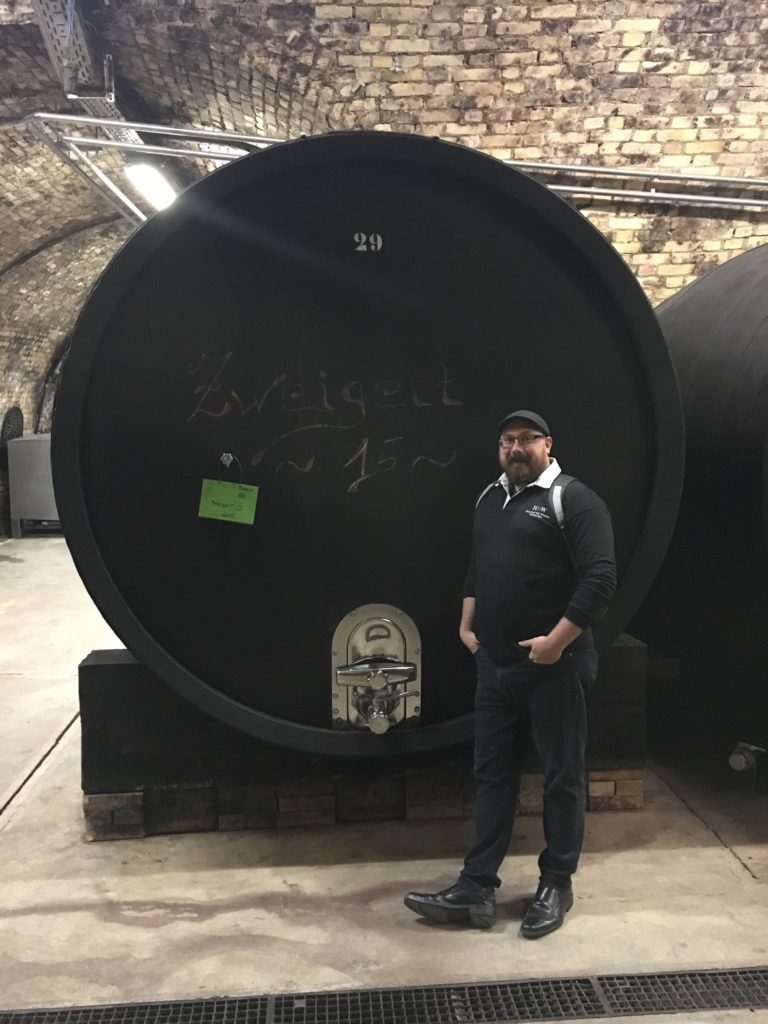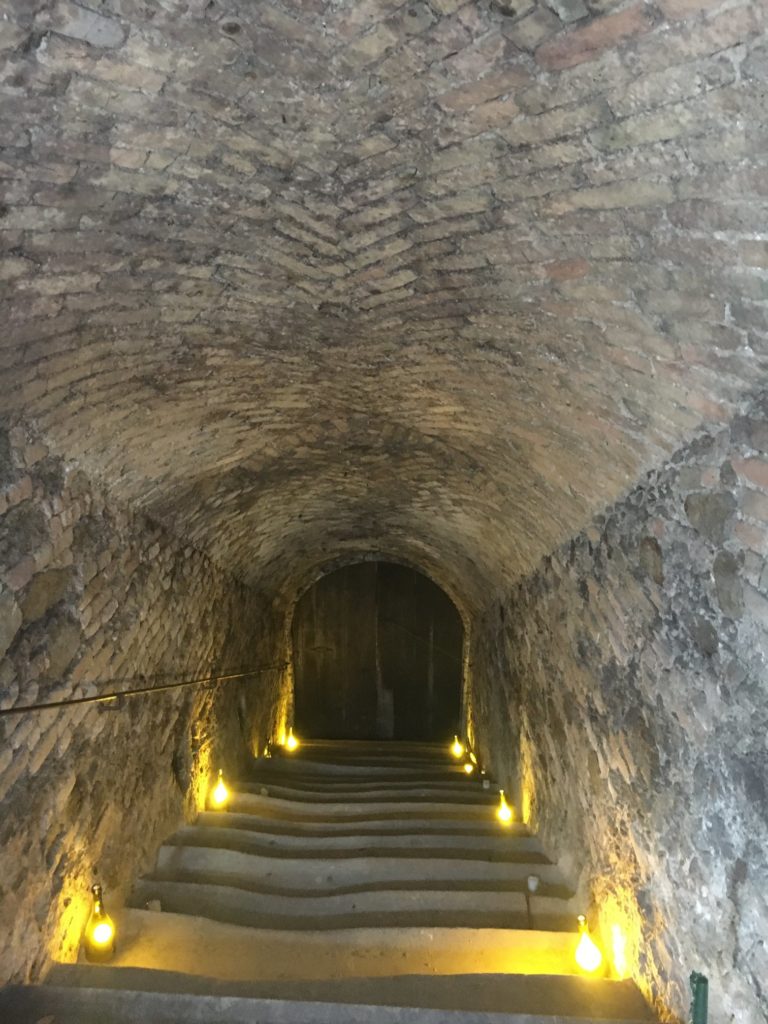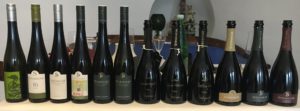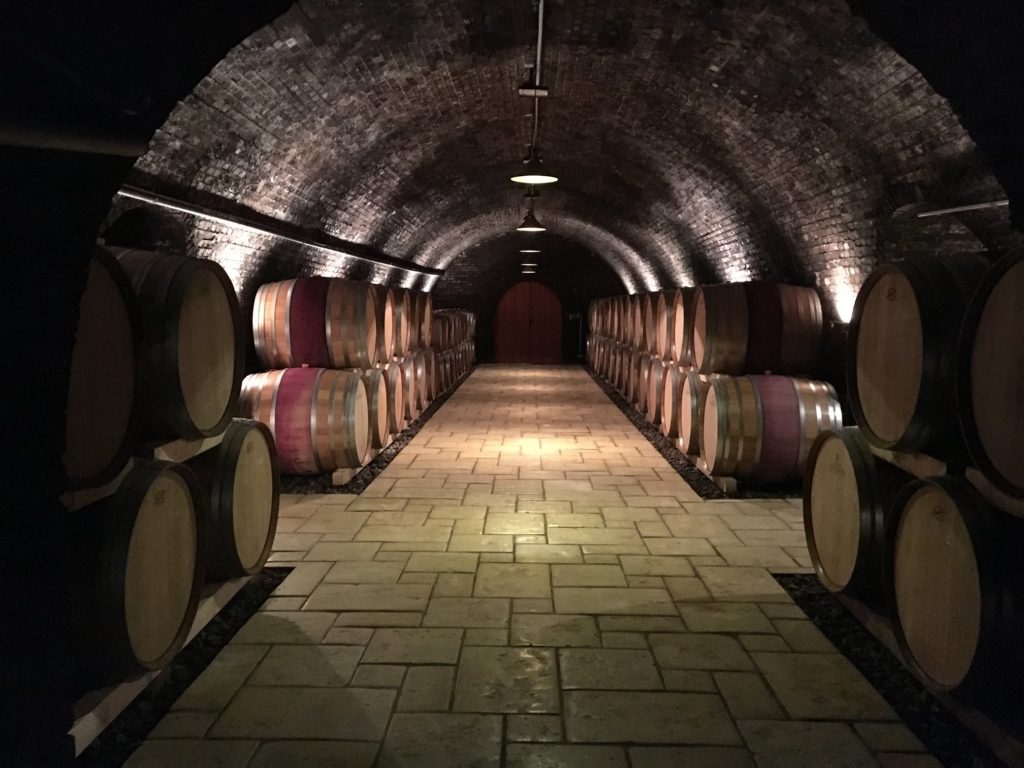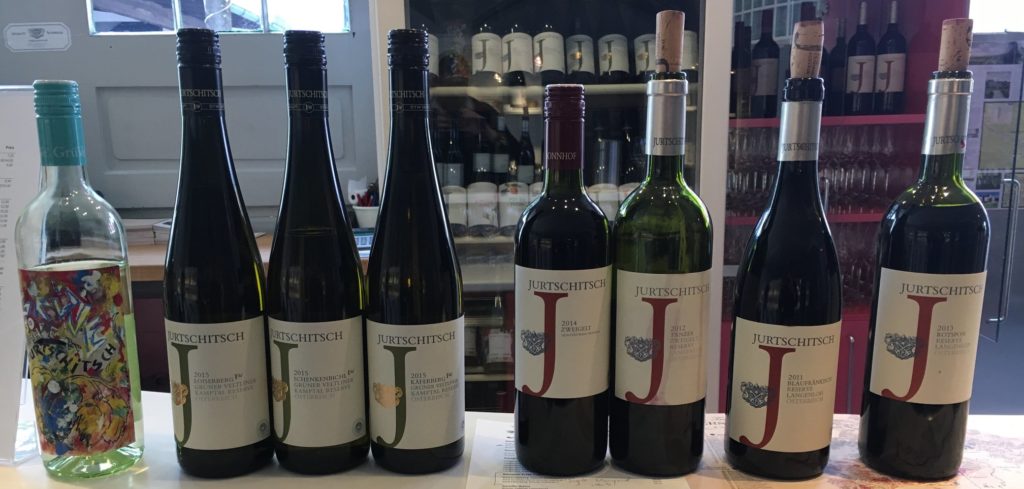
Hahndorf Hill Winery
  Adelaide Hills
Days 4 & 5 – Langenlois, Kamptal
The adjoining regions of Kamptal, Kremstal and Wachau in north-western Austria are to white wines what Burgenland is to reds. Langenlois, the capital of Kamptal, sits in a junction of the three main wine producing valleys and was my first stop in a region specializing in a variety close to the hearts of all HHW fans: Gruner Veltliner.
Two trains, one first class and very high speed then another a relic from the Soviet occupation, brought me from the open rolling plains of Burgenland into a landscape of valleys, streams and steeply terraced vineyards. Unlike Burgenland, this region grows very little of anything that doesn’t eventually end up in a bottle; the view zipping past my window is a beautiful patchwork of criss-crossing vineyards, small villages and swathes of ancient forest.
This region had been cultivated since the Bronze Age but we can point to two significant moments in its history that has transformed the land from mostly wild forest into the Gruner and Riesling powerhouse it is today. When under Roman control the local governor recognised the awesome potential of the rich but well-draining soils, allowing the “natives†to plant vines for wine production for the first time. Then in 1171 the monks of the Cistercian Zwettl Monastery were granted land and vineyards by the then ruling Earl of Kuenring. The Cistercians were a relatively progressive order and instituted a more methodical and scientific approach to wine production.
Langenlois is a jewel; the village itself is a blend of baroque and pastel renaissance buildings, narrow hand-paved streets and open squares. Encircling the village are vineyards that radiate up the hillsides and ridges to greet their kin at the summit that forms the border with the Kamptal and Wachau valleys.
For accommodation we chose the famous Loisium Wine and Spa Resort; of ultra-modern and open design the Loisium is the perfect place from which to explore Langenlois. On my first night I decided to dine in the restaurant and was greeted at the door by the sommelier who I had passed earlier; she had recognised the Hahndorf Hill logo on my jacket and after a chat about my mission and in collusion with the chef, put together an off-menu degustation designed to highlight how exquisitely the local Gruner Veltliners pair with food.
There are four main soil types that make up these valleys and having tasted many single vineyard wines from each type, I can say they are all distinctly different. Each soil type can be easily observed and understood when you walk the “Wein Weg†or Wine Way, a trail that loops through several vineyards, up to the top of the northern ridge then back through the village. Along the walk are dozens of information points describing what is happening at the spot on which you are standing, beautiful sculptures and excellently positioned observation decks that detail points of interest in the valley below. There are even stashes of wine to taste hidden along the way, made from grapes grown in that exact spot! I could not have been more impressed with the care, attention and passion that went into making what is in my opinion one of the great wine attractions of the world.
The stunning vista from the ridgeline contains a secret: The predominant soil type here is loess, a light glacial sand and soil mix that is very easy to tunnel into, and the Langenlois folk have been doing just that, for over 900 years. Underneath the village lies the Catacombs, a sprawling and interconnected network of tunnels and cellars dug out by generations of winemakers.
The Loisium World of Wine experience is unique in all the world, a breathtaking complex marrying the old and new. The museum’s modern cube-like design blends into the sky by day and is brilliantly lit up at night. Here you collect a portable audio player and saunter down through a vineyard to a door into the underground cellars; I have seen subterranean cellars before but not like this. First you become part of an active ferment in a colossal steel tank; your audio guide talks you through the chemical process of fermentation and gives a quick history lesson on why the god of wine, Bacchus, is so important to winemakers and drinkers, all to a spectacular water and laser show. From there you descend into a section of the Labyrinth below the village; after fermentation comes maturation and here you are guided through the barrel cellars. Interactive light, audio and video shows demonstrate how the people of Langenlois lived and work here for centuries. One exhibit I found particularly exciting was a table laid out with earthen jars that each contained the individual aroma components of Gruner Veltliner.
I had the honour of meeting with several pre-eminent local producers and in addition to tasting many of their wines, they also toured me through their cellars. During the Soviet occupation of the 40’s and 50’s the cellars were completely stripped of wine but the huge ancient barrels and other artefacts remain. Rabl is an old house that is enjoying a significant rise in demand; in the last 15 years they have had to add extra capacity and are adding new tunnels to their existing network that was last expanded 300 years ago. Rabl winemaker Martin Schmidt described his cellars as “young†in Langenlois terms.
Lisa Steininger is the youngest of the three daughters of Langenlois Sekt (sparkling wine) pioneer Karl Steininger and was my host during my visit to their incredible estate. I tasted through a portfolio that is home to some of the very best Gruner Veltliners and Zweigelts I have ever tried. They have vineyards peppered throughout the region and offer site-specific wines that really do embody the concept of “people meets place†that we value so much at home. Lisa justifiably takes tremendous pride in her family’s network of ancient but expanding cellars and facilities.
Ursin Haus is a vinothek right in the heart of town. Well trained staff with very good English guided me through a selection of wines that they thought best represented the region. Tasters can choose from two options, either self service through a range of mostly entry and mid-level wines or hand themselves over to the staff to guide you through the whole lot including their Traditionsweinguter Osterreich or “Grand Cru†tier. No guesses as to which option I went for!
The Austrian word for palace is schloss and although the current façade of Schloss Gobelsburg reflects sixteenth century tastes, there have been nobles in residence on this site for considerably longer. It was in the magnificent state room that a tasting of local sekt wines was put on for the finalists in the World Sommelier Challenge and I was invited to join in. The Kamptal does not have a long history of producing sparkling wine but the Gruner Veltliner and Pinot Noir on the slopes visible through the huge hand-blown windows can do just about anything they want. I was pleasantly surprised at the variation and quality shown; I tasted Pet Nats through to bone-dry Nature styles and all were balanced and true to their variety.
The producers here take their sekt so seriously they are in the final stages of locking down a codex system to mandate minimum standards to protect the quality, similar to Champagne’s appellation system.
Once the sommeliers had tasted through the sekt and moved on to their next engagement, I was invited to stay behind for an extra special treat. Schloss Gobelsburg produces one of the finest St Laurents available in Austria and the current manager of the palace and head winemaker, Michael Moosbrugger, opened bottles of the current 2013 vintage back to the 2010 for us to taste. To say I felt honoured is an understatement; Michael does not usually do tastings. The wines were delicate and sophisticated, aromatic but with a firm tannin structure and in Michael’s opinion don’t start to wake up until they are around six years old. St Laurent is a variety HHW is about to invest significant effort into and I am glad we are; a St Laurent of quality can bring even the most militant Francophile or Bordeaux tragic to heel.
Operating since the 16th century, Jurtschitsch is a winery a few minutes’ walk from Steininger and while specialising in Gruner Veltliner, it also has the only Blaufrankisch planting in the valley. The wines were outstanding; the family and crew here are very conscious of their terroir and have broken their wines into three styles: One to represent the Village, one to represent the Vintage and the last to represent the specific Vineyard from which the fruit was sourced. Tastings are by appointment only so call ahead.
Brundlmayer wines and restaurant is in a wonderfully preserved renaissance vintner’s house in the village. I had made my dinner reservation weeks earlier and it was just as well; the restaurant and cellar door is a destination for gourmets from all over the world. Before dinner I sat in the beautiful courtyard and was indulged by the amazing staff who brought me flight after flight of their best Gruners, Zweigelts and St Laurents to taste. Then I was escorted to a table in the restaurant and guided through their degustation options; naturally I chose the big one. Each course was expertly matched to their wines and looked almost too good to eat, but of course I did!
Over two days I tasted too many elite wines and met too many generous and genuinely passionate winemakers to single out just a few to review, so do yourself a favour and get there quick. The tastings I had at Schloss Gobelsburg, Steininger, Rabl, Jurtschitsch and Brundlmayer were unforgettable and I cannot thank them enough.
Next month: Jack’s visit to the Kremstal and Wachau wine regions.

